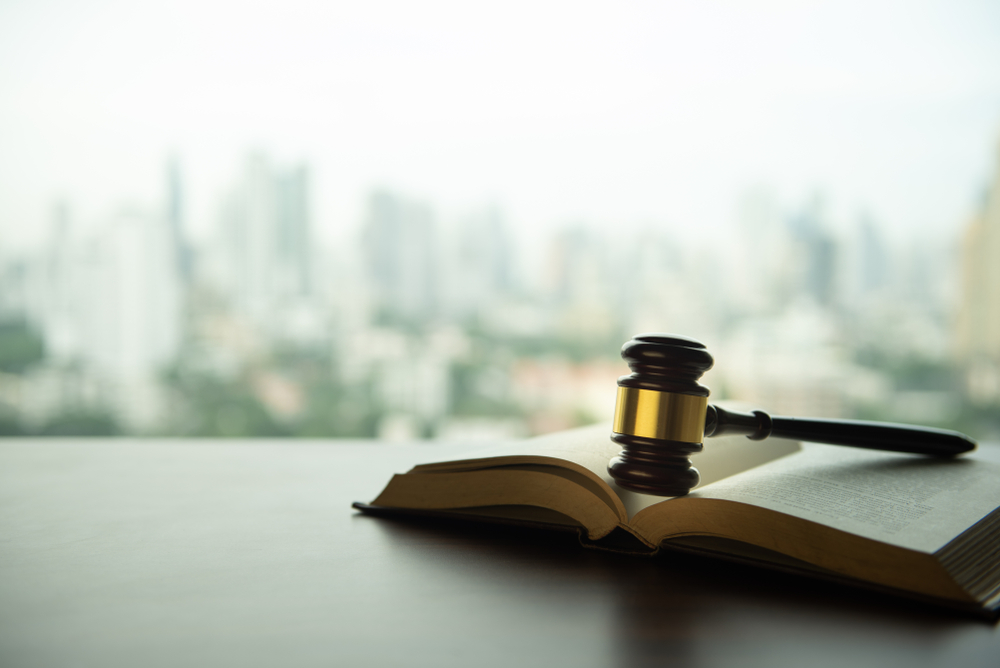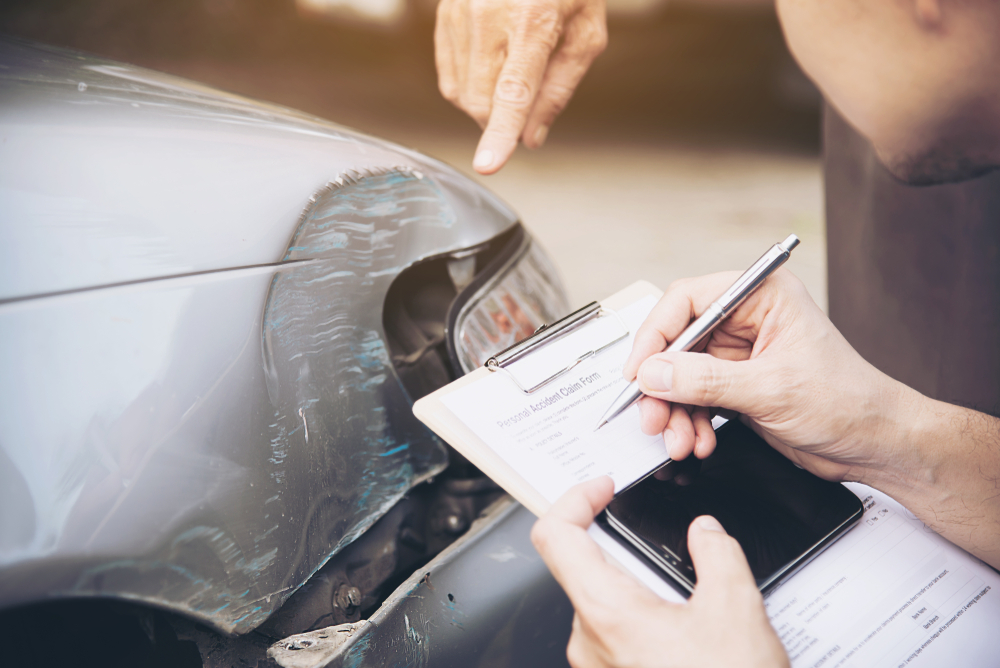Victims of car accidents that result from someone else’s negligence may be entitled to compensation, either by way of a favourable settlement offer from the insurance company or a litigation result in court. The amount of money you should ask for – and which you may receive – as part of a car accident settlement or litigation result will depend upon various factors. Those factors include the type of accident that occurs, the accident circumstances, and the extent of your physical and mental injuries.
When it comes to maximizing settlement compensation following a traffic accident, a knowledgeable car accident lawyer in your area can be an invaluable help. Your Calgary car accident lawyer can estimate the likely settlement or litigation value of your case, depending upon the circumstances, and take the necessary legal steps to maximize the financial compensation you receive for your injuries and other losses.
Types of Car Accidents and the Various Injuries They Case
Motor vehicle accidents stemming from another driver’s negligence can manifest in various forms, each potentially causing a distinct set of injuries. Rear-end collisions, a common occurrence, often result in whiplash injuries due to the sudden and forceful acceleration-deceleration motion imposed on the occupants of the struck vehicle.

Intersection collisions, frequently resulting from drivers disregarding traffic signals or failing to yield the right-of-way, can also lead to a range of injuries. These injuries often include broken bones, spinal injuries, and head trauma, depending upon the amount of force and the specific circumstances surrounding the collision.
Side-swipe accidents, typically occurring when a driver changes lanes without proper caution, may result in injuries such as cuts, bruises, and fractures. The severity depends upon the speed and size of the vehicles involved.
Multi-vehicle pile-ups often arise from reckless driving behaviours like speeding or aggressive maneuvers. Injuries sustained in these accidents can vary widely, ranging from minor bruises to severe trauma, including head injuries, spinal cord damage, and internal injuries.
Roll-over accidents, while less common, can be particularly perilous. They often result from a driver taking a turn too sharply or losing control at high speeds. Injuries from roll-over accidents are often severe, encompassing fractures, head injuries, and spinal cord damage.
Pedestrian accidents may transpire when drivers fail to yield to pedestrians at crosswalks or ignore traffic signals. Injuries that pedestrians suffer in such accidents can be catastrophic, including fractures, traumatic brain injuries, and internal organ damage.
Cyclists are also vulnerable to accidents that result from negligent drivers. Collisions may occur when drivers fail to share the road responsibly, leading to injuries like broken bones, concussions, and road rash.
Accidents involving commercial trucks, such as big rigs and tractor-trailers, can also result in severe injuries due to their size and weight. Common injuries include spinal injuries, traumatic brain injuries, and fractures.
Overall, the types of motor vehicle accidents resulting from another driver’s negligence are diverse, and the injuries suffered can range from minor to severe. The specific circumstances of each accident play a crucial role in determining the nature and extent of the injuries that those involved may suffer. Understanding these dynamics is essential for accurately assessing the effect of negligence and pursuing appropriate settlement compensation for the injuries incurred.
Factors that Affect the Size and Scope of a Car Accident Settlement
The size, scope, and amount of a car accident settlement resulting from another driver’s negligent or reckless behaviour are influenced by numerous factors, each contributing to the overall compensation award that the accident victim receives. One pivotal element is the severity of injuries sustained in the accident. More severe injuries often lead to prolonged consequences, including ongoing pain and suffering, which contribute to higher settlement amounts.
Lost income, resulting from the accident victim’s inability to work due to the accident-related injuries, is another significant factor. Compensation for lost income during the recovery period is calculated, along with potential future earning capacity reductions caused by long-term impairments. This consideration accounts for the financial effect on the victim’s livelihood.
Non-economic damages, such as pain and suffering, emotional distress, and loss of enjoyment of life, are integral components of a settlement. Evaluating the intangible effect on the victim’s well-being requires a nuanced approach, considering the nature and extent of the suffering endured.
The insurance policy limits of the at-fault driver also play a crucial role. The available coverage sets a cap on the potential settlement amount. If the at-fault driver has limited insurance coverage, it may affect the maximum compensation the victim can receive.
Liability is another factor influencing the settlement. Clear evidence of the at-fault driver’s negligence strengthens the victim’s case, potentially leading to a more favourable settlement. Conversely, disputes over liability can prolong negotiations and affect the final settlement amount.
The negotiation skills of the lawyers involved also contribute to the settlement outcome. Effective negotiation can secure a more favourable deal for the victim, taking into account all relevant factors and maximizing compensation.
Ultimately, the size, scope, and amount of a car accident settlement resulting from another driver’s negligence are multifaceted. The interplay of lost income, non-economic damages, insurance policy limits, liability considerations, and negotiation strategies collectively shape the overall settlement reached between the parties, striving to provide fair and comprehensive compensation for the victim’s losses.
Legal Elements of a Car Accident Case
Successfully recovering damages in a car accident claim requires that the victim establish several legal elements that collectively form a compelling case. Central to this is the demonstration of negligence on the part of the at-fault driver. Negligence involves showing that the other driver breached their legal duty of care owed to others on the road – and that this breach directly resulted in the victim’s injuries.

The victim must prove duty, the first element, by establishing that the at-fault driver had a responsibility to drive with reasonable care, adhering to traffic laws and regulations. This duty extends to avoiding actions that can foreseeably harm others sharing the road.
Breach of duty constitutes the second element, requiring evidence that the at-fault driver failed to meet the standard of care expected of a reasonable person under similar circumstances. This may involve presenting evidence of traffic violations, reckless driving behaviours, or other actions that constitute a breach of the duty owed to fellow road users.
Causation, the third element, establishes a direct link between the at-fault driver’s breach of duty and the injuries that the victim sustained. It requires demonstrating that the negligent actions were a substantial factor in bringing about the harm suffered. Expert testimony, accident reconstruction, and medical evidence may contribute to proving this crucial connection.
Lastly, damages, the fourth element, involve showing the actual harm that the accident victim suffered. This encompasses both economic and non-economic losses resulting from the accident, such as lost income, pain and suffering, and emotional distress. Thorough documentation, including medical records and employment records, is pivotal in establishing the extent of the damages incurred.
Throughout the legal process, effective presentation of evidence is critical. Witness testimony, police reports, traffic camera footage, and expert opinions may bolster the victim’s case. Timely and comprehensive gathering of evidence, coupled with strategic legal arguments, enhances the likelihood of proving these legal elements and securing a favourable outcome in the car accident case.
Car Accident Settlements versus Litigation
Deciding between settling a car accident claim with the insurance company and litigating a car accident case in the court system involves carefully considering various factors, each carrying its own set of advantages and drawbacks.
Opting for a settlement with the insurance company provides a relatively expedient resolution. The process typically involves negotiations between the accident victim’s legal representative and the insurance company adjuster. Settlements often result in faster compensation, alleviating the financial strain on the victim sooner. Additionally, settling outside of court can be less stressful and requires less time and resources than litigation.
However, settling a claim may not always yield the most favourable compensation. Insurance companies may offer settlements that do not fully address the extent of the accident victim’s losses. Without the formalized structure of a court proceeding, there is potential for the victim to accept a settlement that falls short of what may be attainable through litigation.

On the other hand, litigating a car accident case in the court system provides the victim with the opportunity to present their case comprehensively. This involves presenting evidence, cross-examining witnesses, and making legal arguments before a judge and, in some cases, a jury. Litigation allows for a thorough examination of the facts, potentially revealing aspects of the case that may be overlooked during settlement negotiations.
While litigation can be a more protracted process, it offers the chance for a more substantial recovery. If liability is disputed or if the insurance company’s settlement offers are inadequate, a court trial allows for a fair and impartial judgment. The court’s decision can result in a more comprehensive award that addresses the full scope of the victim’s damages, including both economic and non-economic losses.
However, the litigation process can be time-consuming and emotionally draining. It may involve additional costs associated with legal representation and court fees. Furthermore, there is an inherent level of uncertainty associated with court outcomes, as judgments are subject to the interpretation of the judge or jury.
Ultimately, the decision to settle a car accident claim with the insurance company or pursue litigation in the court system hinges on the specific circumstances of the case, the desired speed of resolution, and the determination of what constitutes fair and just compensation for the accident victim’s losses.
Car Accident Trials and ADR Proceedings
A car accident trial or alternative dispute resolution (ADR) proceeding, including binding arbitration or mediation, follows a structured process to resolve the dispute between the parties involved. During a trial, the case unfolds within the formal courtroom setting, while ADR proceedings provide alternative forums for resolution outside of the traditional courtroom setting.
At a car accident trial, the proceedings begin with the selection of a jury, a critical component of the adversarial system. Both parties, along with their lawyers, present opening statements outlining their positions and the evidence they intend to present. Witness testimonies, expert opinions, and documentary evidence are presented, each side cross-examining the other’s witnesses to scrutinize the credibility of their statements.
The trial progresses with each party presenting their legal arguments and interpretations of the evidence before the judge and jury. Closing arguments give lawyers the final opportunity to persuade the jury in favour of their client. The judge then instructs the jury on relevant legal principles, and the jury retires to deliberate and reach a unanimous verdict.
Alternatively, ADR proceedings, such as binding arbitration or mediation, offer a less formal and confrontational approach to dispute resolution. During mediation, a neutral third party, the mediator, facilitates settlement discussions between the parties, encouraging open communication and assisting in finding common ground for a resolution. The mediator does not impose a decision but helps the parties reach a mutually agreeable settlement.
Binding arbitration, conversely, involves a neutral arbitrator who acts similarly to a judge. The parties present their cases, and the arbitrator renders a binding and enforceable decision. Unlike mediation, the arbitrator has the authority to make a final determination on the dispute.
Both trial and ADR proceedings may involve pre-trial motions, evidentiary hearings, and legal arguments. The key distinction lies in the formality, structure, and potential for a binding decision.
Regardless of the forum chosen, the resolution of a car accident dispute hinges on the strength of the evidence presented, the effectiveness of legal arguments, and the ability of the parties to negotiate or advocate for their positions. Whether in a courtroom trial or an ADR proceeding, the ultimate goal is to reach a resolution that addresses the grievances of the parties involved and provides a just outcome based on the case’s merits.

Speak with a Car Accident Lawyer About Your Options Today
If you suffered injuries in a car accident, you may be entitled to various types of settlement or litigation compensation. A Calgary personal injury lawyer in your area can go over potential legal options with you and help you decide on the best forum for resolving your case. Whatever you decide, your lawyer will aggressively advocate for your interests and work to maximize the settlement or litigation award you ultimately receive.
